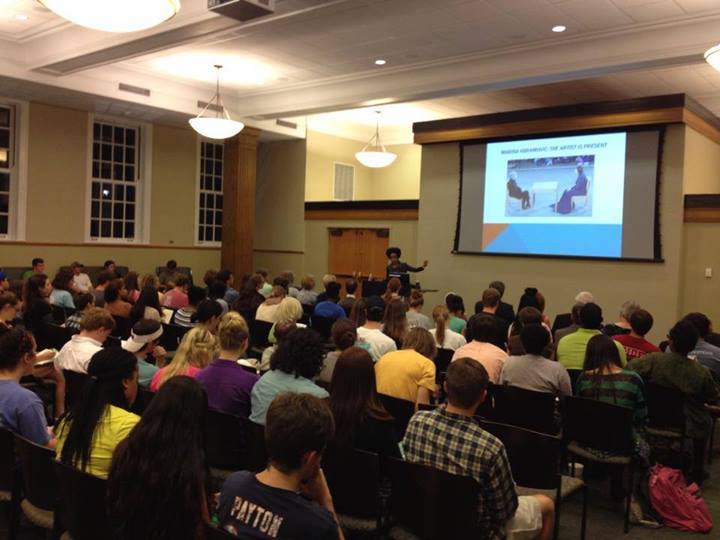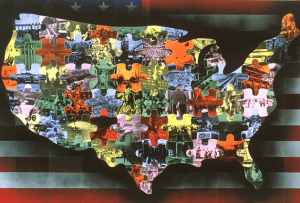 Leslie Dorough Smith wrote a post the other day on how we all resort to telling origins stories. As she noted, it’s a common rhetorical technique used when selling products and when talking about ourselves, either as individuals or as group members of nations, religions etc. No doubt we do tell origins stories and create myths to prove our worth: “I was here first!” says the little kid when competing for the swing. Continue reading “When the Stakes are High”
Leslie Dorough Smith wrote a post the other day on how we all resort to telling origins stories. As she noted, it’s a common rhetorical technique used when selling products and when talking about ourselves, either as individuals or as group members of nations, religions etc. No doubt we do tell origins stories and create myths to prove our worth: “I was here first!” says the little kid when competing for the swing. Continue reading “When the Stakes are High”
Bayart on Ethnicity
“A great many anthropological and historical studies have shown that pre-colonial societies were almost always mutli-ethnic, and included a great diversity of cultural repertoires; that the principal forms of social or religious mobilisation were trans-ethnic; and that ancient Africa most definitely did not consist of a mosaic of ethnic groups. This does not mean that ethnicity is a pure construct … produced by colonising powers that sought to divide the better to rule, as African nationalists — and, paradoxically, some ethno-nationalists — still like to believe. Colonised peoples took part in its ‘formation’ by appropriating the new political, cultural and economic resources of the bureaucratic state. In one of the many working misunderstandings, ‘Europeans believed Africans belonged to tribes; [whereas] Africans built tribes to belong to’, as John Iliffe brilliantly expressed it.* The political importance of ethnicity proceeds precisely from the fact that it is an eminently modern phenomenon connected to the ‘imported state’, and not a residue or resurgence of ‘traditional culture’.” (29-30)
*John Iliffee, A Modern History of Tanganyika (Cambridge University Press, 1979, p. 324). The role of African middlemen, especially the literate ones, in the process of colonial ‘imagination’ of ethnicity is now better understood than a few years ago, when emphasis was placed on the intervention of European administrators and missionaries….
[This is one of a series of posts, quoting from Bayart’s The Illusion of Cultural Identity, that further documents the theoretical basis
on which Culture on the Edge is working.]
“Where Do We Go From Here…?”
 Monica Miller, of Lehigh University and member of Culture on the Edge, recently delivered the inaugural Day Lecture in Tuscaloosa, AL. Merinda Simmons, also of the Edge and a professor at the University of Alabama, sat down and talked with Monica, about her work and the field of the study of religion.
Monica Miller, of Lehigh University and member of Culture on the Edge, recently delivered the inaugural Day Lecture in Tuscaloosa, AL. Merinda Simmons, also of the Edge and a professor at the University of Alabama, sat down and talked with Monica, about her work and the field of the study of religion.
On Memorials
 Learn more.
Learn more.
The Natural Look
 So opened The National Post‘s September 10, 2013, article on the Canadian province of Quebec’s recent (and for some, rather controversial) Charter of Quebec Values, along with the accompanying picture of the Premiere, Pauline Marois, joined by Bernard Drainville, the Minister Responsible for Democratic Institutions and Active Citizenship. Continue reading “The Natural Look”
So opened The National Post‘s September 10, 2013, article on the Canadian province of Quebec’s recent (and for some, rather controversial) Charter of Quebec Values, along with the accompanying picture of the Premiere, Pauline Marois, joined by Bernard Drainville, the Minister Responsible for Democratic Institutions and Active Citizenship. Continue reading “The Natural Look”
How Deep is Your Love?

(You really should play the song below while you read this post. For the full audio-visual experience.)
A routine turn of phrase in the English language is to enhance a claim by using the metaphor of depth — thoughts can be deep, the hero looks deeply into his love’s eyes, or “deep down, I feel that…”. Conversely, of course, a lack of such depth signifies insincerity and probably insufficient intelligence — after all, “Shallow Hal” was a movie all about overcoming a preoccupation with surface appearances, learning instead to see true, “inner beauty.” Continue reading “How Deep is Your Love?”
The Violence of Mistaken Identities
 Two recent incidents of mistaken identity in the United States have garnered significant attention. The crowning of Nina Davuluri as Miss America, the first Indian-American to win that pageant, spurred some people to tweet their displeasure, associating her with Arabs and terrorists and questioning if she is American. In a more physically violent incident, some men attacked Prabhjot Singh near his home in New York City, taunting him as “Osama” and “terrorist,” apparently because of the turban he wears as a part of his expression of Sikh identity. Continue reading “The Violence of Mistaken Identities”
Two recent incidents of mistaken identity in the United States have garnered significant attention. The crowning of Nina Davuluri as Miss America, the first Indian-American to win that pageant, spurred some people to tweet their displeasure, associating her with Arabs and terrorists and questioning if she is American. In a more physically violent incident, some men attacked Prabhjot Singh near his home in New York City, taunting him as “Osama” and “terrorist,” apparently because of the turban he wears as a part of his expression of Sikh identity. Continue reading “The Violence of Mistaken Identities”
Why religious hatred?
 During the 1800’s, British colonizers identified particular conflicts as being “religious,” a description that many now describe as part of the British strategy of Divide and Rule. Scholars have noted examples of British accounts of “religious conflict between Hindus and Muslims” whose details, as the British recorded them, actually undermined such assertions, as participants whom the records identified as Hindus and Muslims participated on both sides of specific conflicts. Continue reading “Why religious hatred?”
During the 1800’s, British colonizers identified particular conflicts as being “religious,” a description that many now describe as part of the British strategy of Divide and Rule. Scholars have noted examples of British accounts of “religious conflict between Hindus and Muslims” whose details, as the British recorded them, actually undermined such assertions, as participants whom the records identified as Hindus and Muslims participated on both sides of specific conflicts. Continue reading “Why religious hatred?”
A Character Study
 Have you seen this beer new commercial? Continue reading “A Character Study”
Have you seen this beer new commercial? Continue reading “A Character Study”
“Is it ever OK to use the N-word?”
 Monica Miller was recently featured on the front page of The Morning Call in an interview discussing whether it is okay to use the N-Word and its implications for various groups. See what she says in the interview here.
Monica Miller was recently featured on the front page of The Morning Call in an interview discussing whether it is okay to use the N-Word and its implications for various groups. See what she says in the interview here.
